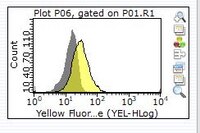YAP determines the cell fate of injured mouse hepatocytes in vivo
Norio Miyamura 1 , Shoji Hata 1 , Tohru Itoh 2 , Minoru Tanaka 3 , Miki Nishio 4 , Michiko Itoh 5 , Yoshihiro Ogawa 6 , Shuji Terai 7 , Isao Sakaida 8 , Akira Suzuki 4 , Atsushi Miyajima 2 , Hiroshi Nishina 1
Nat Commun
8
16017
2017
Show Abstract
The presence of senescent, transformed or damaged cells can impair tissue function or lead to tumorigenesis; therefore, organisms have evolved quality control mechanisms to eliminate them. Here, we show that YAP activation induced by inactivation of the Hippo pathway specifically in damaged hepatocytes promotes their selective elimination by using in vivo mosaic analysis in mouse liver. These damaged hepatocytes migrate into the hepatic sinusoids, undergo apoptosis and are engulfed by Kupffer cells. In contrast, YAP activation in undamaged hepatocytes leads to proliferation. Cellular stresses such as ethanol that damage both liver sinusoidal endothelial cells and hepatocytes switch cell fate from proliferation to migration/apoptosis in the presence of activated YAP. This involves the activation of CDC42 and Rac that regulate cell migration. Thus, we suggest that YAP acts as a stress sensor that induces elimination of injured cells to maintain tissue and organ homeostasis. | 28681838
 |
Inhibition of Stabilin-2 elevates circulating hyaluronic acid levels and prevents tumor metastasis
Yoshikazu Hirose 1 , Eiko Saijou, Yasuyoshi Sugano, Fumitaka Takeshita, Satoshi Nishimura, Hidenori Nonaka, Yen-Rong Chen, Keisuke Sekine, Taketomo Kido, Takashi Nakamura, Shigeaki Kato, Toru Kanke, Koji Nakamura, Ryozo Nagai, Takahiro Ochiya, Atsushi Miyajima
Proc Natl Acad Sci U S A
109(11)
4263-8
2012
Show Abstract
Hyaluronic acid (HA) has been implicated in the proliferation and metastasis of tumor cells. However, most previous studies were conducted on extracellular matrix or pericellular HA, and the role of circulating HA in vivo has not been studied. HA is rapidly cleared from the bloodstream. The scavenger receptor Stabilin-2 (Stab2) is considered a major clearance receptor for HA. Here we report a dramatic elevation in circulating HA levels in Stab2-deficient mice without any overt phenotype. Surprisingly, the metastasis of B16F10 melanoma cells to the lungs was markedly suppressed in the Stab2-deficient mice, whereas cell proliferation was not affected. Furthermore, administration of an anti-Stab2 antibody in Stab2(+) mice elevated serum HA levels and prevented the metastasis of melanoma to the lung, and also suppressed spontaneous metastasis of mammary tumor and human breast tumor cells inoculated in the mammary gland. Administration of the antibody or high-dose HA in mice blocked the lodging of melanoma cells to the lungs. Furthermore, HA at high concentrations inhibited the rolling/tethering of B16 cells to lung endothelial cells. These results suggest that blocking Stab2 function prevents tumor metastasis by elevating circulating HA levels. Stab2 may be a potential target in antitumor therapy. | 22371575
 |
Development of murine hepatic sinusoidal endothelial cells characterized by the expression of hyaluronan receptors
Hidenori Nonaka 1 , Minoru Tanaka, Kaori Suzuki, Atsushi Miyajima
Dev Dyn
236(8)
2258-67
2007
Show Abstract
Endothelial cells (ECs) display distinct structural and functional characteristics depending on the tissue and developmental stage; however, the development of tissue-specific ECs remains poorly understood. Here, we describe the development of hepatic sinusoids in mice based on the expression of hyaluronan receptors Stab2 and Lyve-1. Flk-1(+) cells in and around the liver bud begin to express Stab2 at embryonic day (E) 9.5, before the formation of vascular lumen. Hepatic sinusoidal endothelial cells (HSECs) begin to express Lyve-1 at E10.5, and both markers continue to be expressed in HSECs thereafter. Although HSECs and lymphatic ECs (LECs) are known to share functional and phenotypic characteristics, we clearly show that HSECs can be distinguished from LECs by the expression of molecular markers and higher endocytotic activity. Our results provide new insight into the development of tissue-specific ECs and phenotypic criteria to distinguish HSECs from other types of ECs, including LECs. | 17626278
 |










